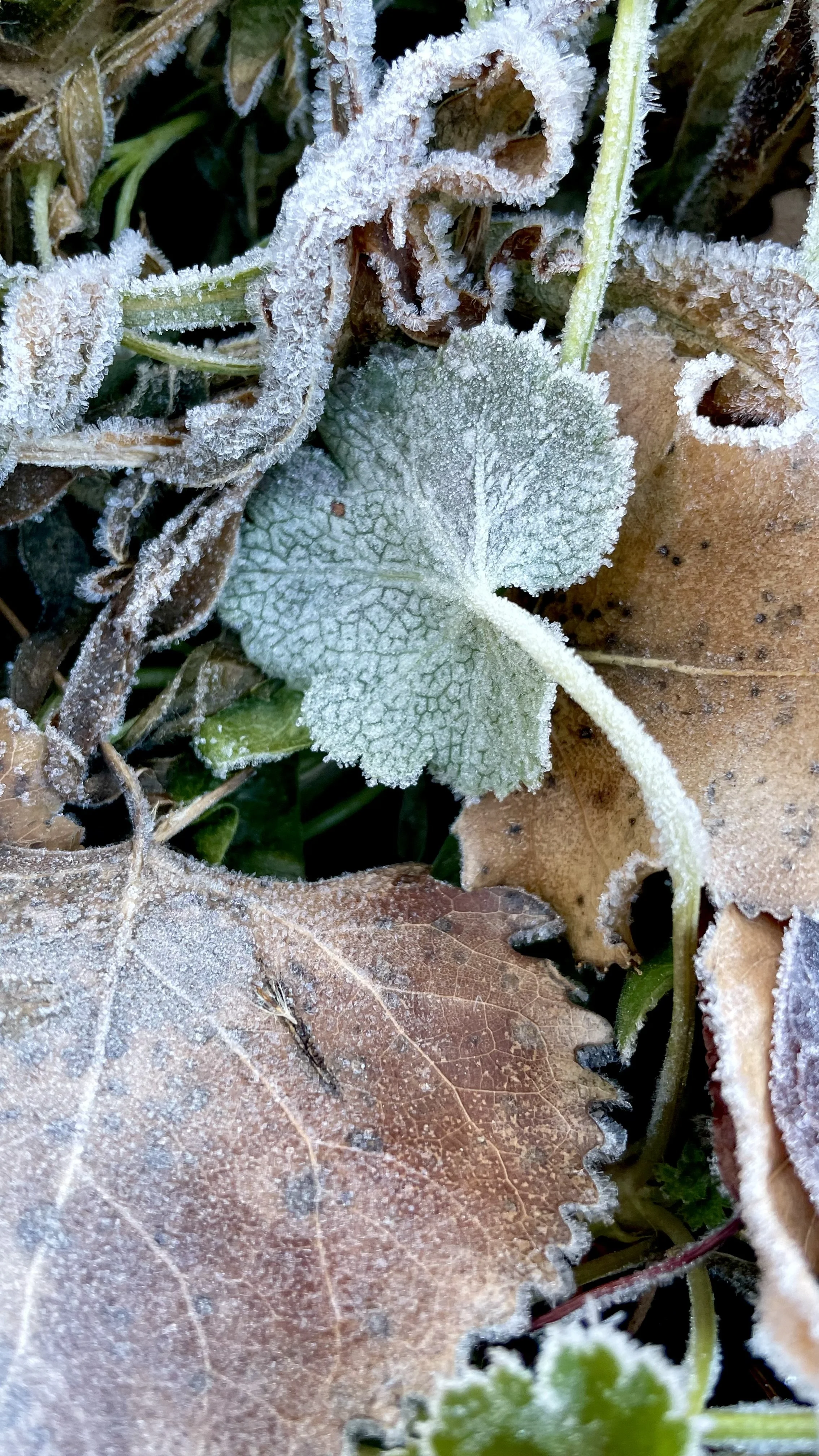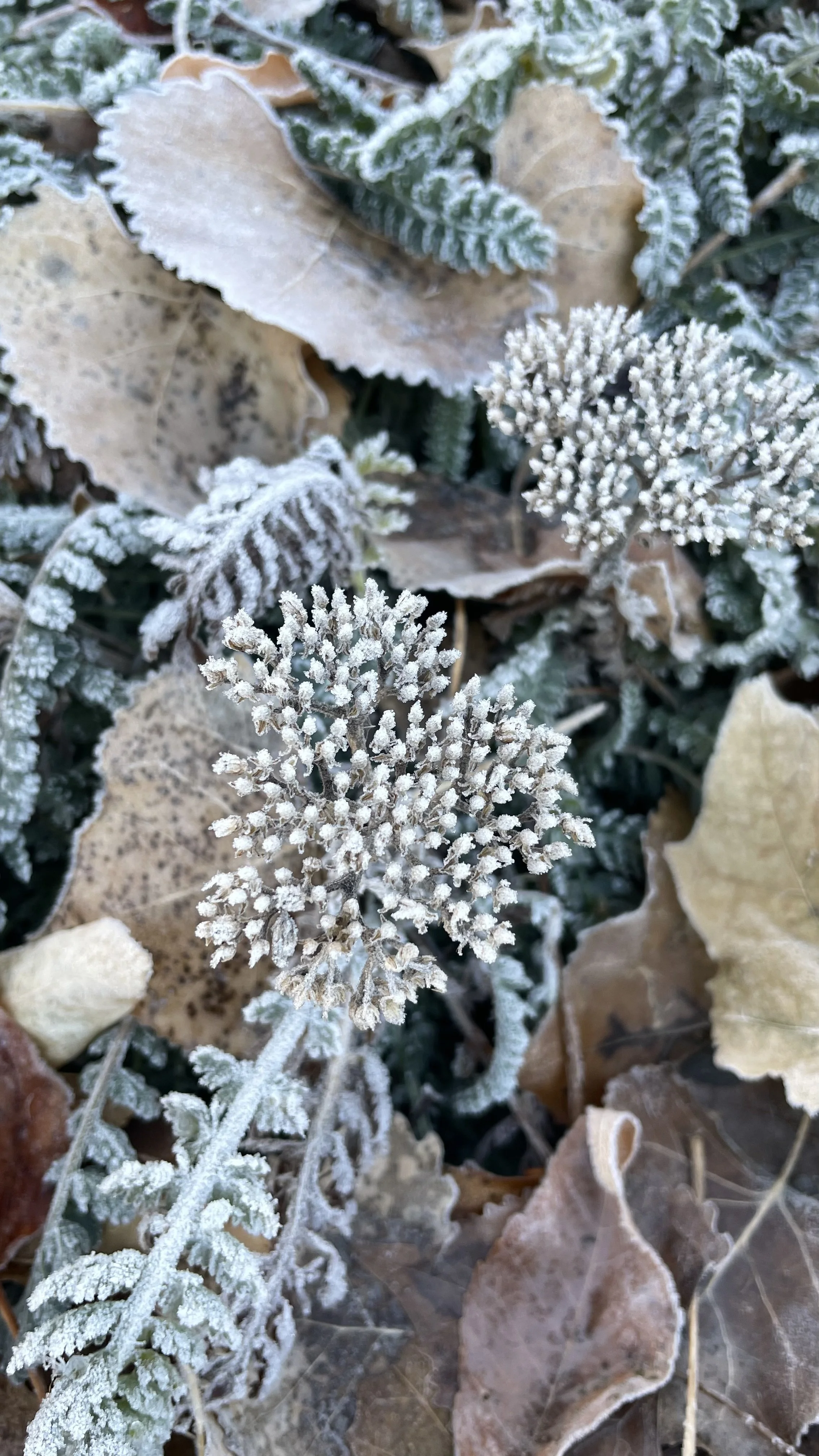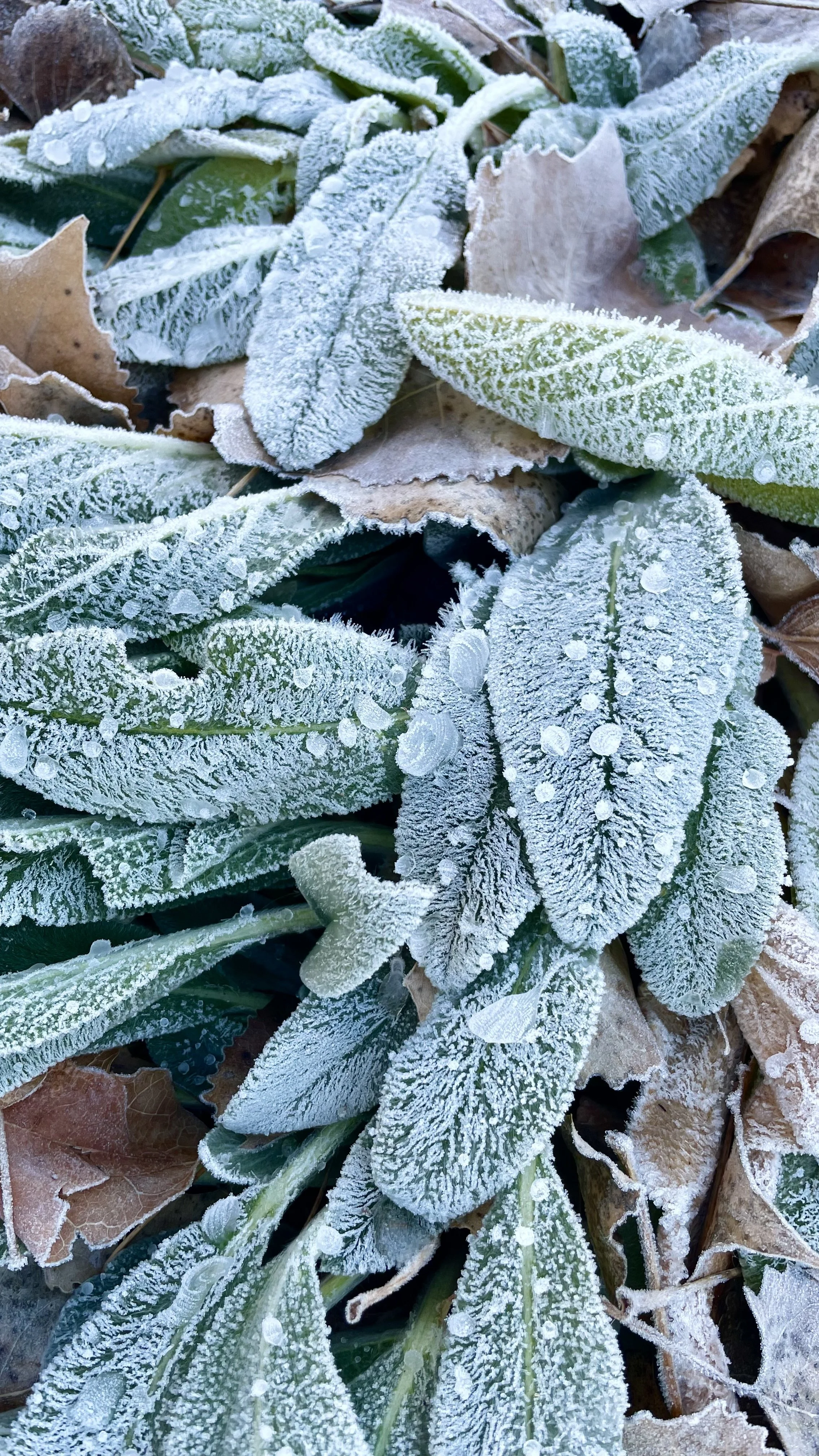First Frost Dates
& Why They Matter
As the days get shorter and the nights cooler, every gardener starts thinking about one crucial thing: the first frost date. Whether you’re planting fall crops, harvesting summer ones, or prepping your beds for winter, knowing when frost is expected can make or break your gardening success.
In this post, I’ll walk you through what a frost date actually is, how to find yours, and why it’s one of the most important things to track in your growing season.
What Is a First Frost Date?
Your first frost date is the average date in the fall when your area experiences its first light frost—typically when temperatures dip to 32°F (0°C) or below. It's not an exact prediction but a general guideline based on years of weather data.
There are actually two kinds of frost you should know about:
Light frost: Occurs at 32°F or just below; tender plants like tomatoes and basil will be damaged or killed.
Hard frost: Happens at 28°F or lower; most non-hardy plants won’t survive it.
Knowing this date helps you plan everything from harvesting your last tomatoes to getting your garlic in the ground before it’s too late.
Why Does the First Frost Date Matter?
Timing is everything in gardening, and the first frost date tells you how much time you have left before cold weather shuts down your growing season.
Here’s why it matters:
🌱 Protecting cold-sensitive crops: Tender vegetables like peppers, beans, and cucumbers need to be harvested before frost hits.
🌾 Timing fall planting: Cool-season crops like garlic, spinach, and kale need to be planted early enough to get established before the ground freezes.
🧪 Planning crop succession: You can squeeze in a final planting of quick-growing greens or root vegetables if you know your frost window.
🍁 Prepping your garden for winter: Frost dates signal when to mulch, cover perennials, and bring in potted plants.
Season extenders can keep the growing going long into fall and winter. Check out my guide with some easy and inexpensive options that I use in my own garden.
How to Find Your First Frost Date
Luckily, finding your frost date is easy with just a ZIP code or your location. Here are a few tools and methods:
Use a Frost Date Calculator
There are several reliable online tools that use USDA climate data to give you your area’s average frost dates. My favorite is: USDA Plant Hardiness Zone Map
Just plug in your ZIP code, and you’ll get both your first fall frost and last spring frost dates.
Check with Your Local Extension Office
Your county’s cooperative extension service often publishes frost dates and growing advice specific to your region. It’s especially helpful in areas with microclimates or high elevation changes.
Keep a Garden Journal
If you’ve been gardening for a few years, track when frost actually hits your area. Local conditions can vary from the averages—especially if you live in a valley, near water, or at high elevation.
How Accurate Are Frost Dates?
First frost dates are historical averages, not guarantees. Mother Nature doesn’t always follow the calendar! That’s why it’s best to think of your frost date as a window rather than a hard deadline. A cold snap could come early, or you might get a few bonus weeks of mild weather.
Always keep an eye on your local forecast as fall approaches. And when in doubt? Be ready to cover your plants or harvest early!
What to Do Once You Know Your Frost Date
Once you have your first frost date, use it to plan backwards:
Fall planting: Make sure any fall crops go in early enough to mature before frost.
Harvest scheduling: Pick tender crops at least a day or two before the expected frost.
Season extension: Use row covers, cold frames, or frost cloth to protect crops and extend your harvest beyond your average frost date.
Garlic and bulbs: Get them planted 2–4 weeks before your first frost so they have time to root.
at the close…
Understanding your first frost date is one of the easiest and most powerful tools in your gardening toolbox. It helps you plan, protect, and make the most of every growing season—whether you're harvesting your final tomatoes or tucking in garlic for the winter.
So go ahead—look up your frost date, mark it on your calendar, and plan accordingly. Your plants (and your harvest basket) will thank you.
Need help finding your frost date or planning your fall garden? Drop your ZIP code or zone in the comments and I’ll help you figure it out!
And don’t forget to like, share, or pin this post if you found it helpful. Happy gardening!
Subscribe now so you never miss a thing!







